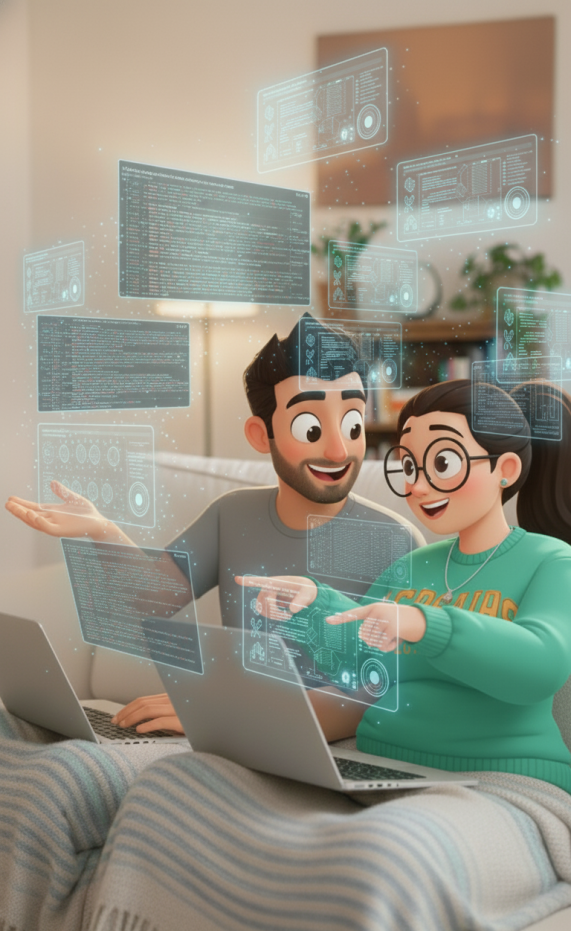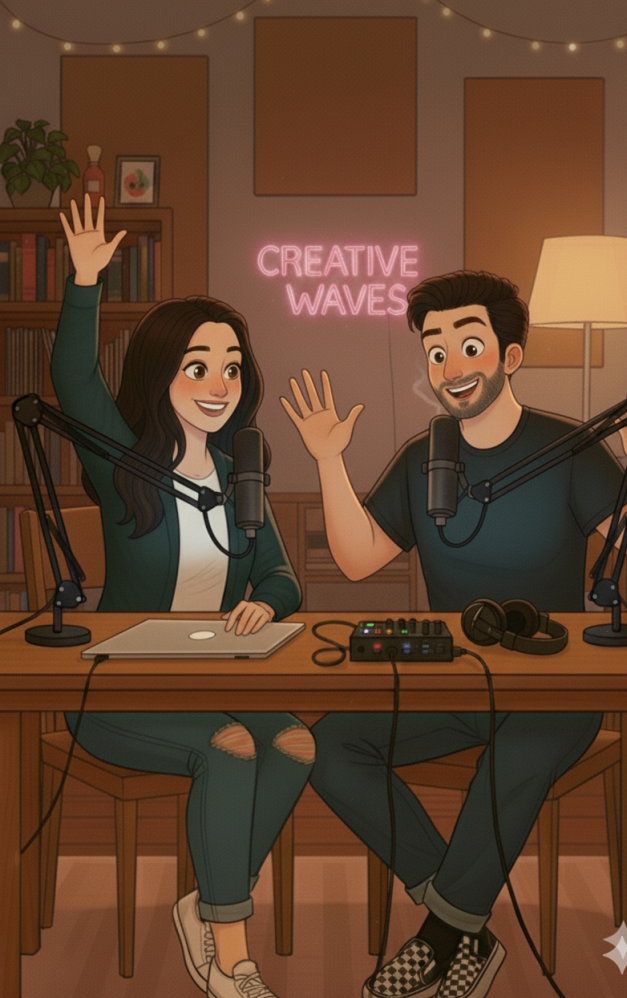
AI isn’t just for tech wizards; it’s reshaping the way we bond and connect. Back in the day, human interactions were mainly face-to-face or maybe over the phone. Fast forward to today, and we have AI stepping into the personal relationship space. These aren’t just science fiction stories but a peek into today’s reality.
We live in an age where technology goes beyond gadgets – it’s part of our lives and loves. Ever caught yourself chatting with a virtual assistant, asking Siri or Alexa about your day, or just wondering how those AI chatbots really work? Yeah, that’s AI embedding itself right into our daily experiences.
Looking forward, AI’s role in relationships is only going to grow. Futuristic movies might have prepped us for this, but it’s time to get real about how AI fits into our personal connection points. Whether it’s enhancing communication, offering companionship, or even revamping dating apps, AI challenges and transforms our social fabric.
What’s in store for down the line? Well, more seamless integration where AI-powered entities assist, entertain, or even offer a shoulder to cry on. The journey is exciting, a bit daunting, and surely revolutionary. So, what path we take next depends on how well we grasp these early steps – understanding AI in modern relationships is just the starting line.
Navigating the Landscape: Types of AI Relationships
AI’s expanding role in our lives comes in many forms, impacting relationships in ways we never envisioned. Think about chatbots that offer guidance when you’re having a bad day or virtual assistants providing companionship to those in need of someone who listens. It’s more than just a techy trend; it’s about connection.
Going beyond virtual assistants, humanoid robots are entering the scene, providing more physical forms of companionship. These robots engage in lifelike interactions, adding a new dimension to AI relationships. They might help with daily routines or simply be there as a presence, reflecting a more tangible side of AI
Dating has also seen a sharp turn with AI’s involvement. Ever notice how matchmaking algorithms get smarter every day? They learn our preferences, suggest partners based on personality insights, and sometimes even orchestrate virtual dates. While it sounds a bit sci-fi, it’s about enhancing the dating experience, making it more personalized and efficient.
In every instance, AI’s manifestation in relationships is changing how we perceive connection. It’s important to consider how these different types may fit into one’s life. Are they supplementing human interaction, or replacing it? That’s the big question to mull over. Either way, understanding these diverse AI relationship types helps us navigate this new terrain.
Ethical Foundations of AI Interactions
Exploring the realm of AI interactions opens up a debate about the ethics surrounding them. It’s not just about what AI can do, but what it should do when it comes to forming relationships. Navigating this ethical landscape means asking some serious questions.
First up, there’s the question of consent. With AI becoming part of personal spaces, ensuring consent in digital conversations is huge. Are folks aware of what’s being shared and how it’s used? Keeping privacy intact while fostering connection is tricky but necessary.
Safety is another pillar in the ethical discussion. While AI can offer support and companionship, ensuring user security is vital. This involves creating measures to protect against misuse and ensuring the AI itself behaves ethically.
So what drives ethical AI relationships? It’s about transparency, clarity in how data gets handled and shared. Users should not only consent but understand the terms fully. After all, a trusting relationship is one built on clear, fair terms.
Tackling these ethical foundations moves us towards an AI future rooted in respect and trust. These values are, after all, the groundwork for any meaningful interaction, AI-based or human.
Human Emotions and AI: Bridging the Gap
Human emotions are complex, sometimes hard to explain even to fellow humans. Bringing AI into the mix adds another layer to that complexity. Can AI really understand feelings, or is it more of a mimicry game? Let’s look into where AI stands with human emotions.
AI is getting better at recognizing cues like tone and facial expressions, trying to decode the emotional puzzle. However, programming genuine empathy is another ball game. This gap between human emotions and AI’s interpretations remains a key area of interest.
For some, AI offers a safe haven in terms of interaction. It’s non-judgmental, and for people who find social settings challenging, an AI companion might offer comfort minus the pressure. But can a machine ever replace the warmth of a human touch? Probably not, but it can complement situations where human interaction isn’t available.
There have been cases where people form emotional bonds with AI, evident in how some users turn to their virtual assistants for companionship and comfort. The line between assistance and emotional reliance gets blurred here, so it’s something to keep an eye on.
Bridging this emotional gap requires more than technical advancements. It calls for thoughtful consideration of what it means for a machine to ‘understand’ us. While tech can mimic empathy, preserving the genuine essence of emotions in AI interactions is key. It’s not about creating emotionless machines but about enhancing human experiences responsibly.
The Question of Authenticity and Trust in AI
AI in relationships brings up big questions about authenticity. When interacting with AI, how real is the connection? Are the feelings reciprocated in any genuine sense, or is it all just smart algorithms working behind the scenes? These questions matter because trust is core to any true relationship.
Trust issues often stem from AI’s ability to learn and adapt. While adaptability can tailor experiences to individual preferences, it also creates doubt about genuine interaction versus programmed responses. Some might feel a deep personal bond with their AI companion, but if everything’s pre-coded, where’s the authenticity?
Debates about authentic connections with AI often circle back to understanding. Machines can simulate responses, but without genuine understanding, it’s more of an illusion than reality. This illusion might be comforting, but it’s crucial to recognize the limits of machine empathy.
Balancing human intuition with machine logic keeps this authenticity in check. Engaging with AI should be about enhancing experiences, not replacing real connections. Awareness of AI’s role — as a tool rather than a replacement for human interaction — fosters healthier, more trustful relations.
In this landscape, it isn’t about dismissing AI in relationships but understanding its place. Building trust with AI involves transparency from developers and clarity from users about what an AI interaction truly offers. It’s about informed, mindful engagement with this tech realm.
Impacts on Society and Human Interactions
AI’s influence stretches beyond personal borders, reshaping societal norms and human interactions in broad strokes. This shift requires us to rethink how we connect, communicate, and build communities. AI challenges traditional ideas about human contact, pushing new boundaries.
With AI venturing into relationship roles, there’s a palpable shift in how we approach love and companionship. Virtual friends or AI-enhanced matchmaking might sound futuristic, but they’re very much part of our landscape today. Such changes demand we evaluate their impact on personal connections and social structures.
Anxiety around AI replacing traditional relationships isn’t unfounded, but it often overlooks AI’s potential to enrich our social experience rather than diminish it. The integration of AI might redefine loneliness for some, offering company where there was none. It can open up opportunities for people isolated by circumstances beyond their control.
Society’s fascination with AI coexists with a shadow of fear — fear of losing a bit of humanity along the way. Stories of people forming deep connections with AI challenge our perceptions. They make us wonder about the future of human relationships, yet they also encourage innovation and inclusivity.
This changing landscape asks us to balance fear and opportunity thoughtfully. It calls for a societal effort to integrate AI responsibly, ensuring it enhances rather than replaces the essence of human interaction. It’s less about the technology itself and more about our approach to engaging with it, ensuring that AI serves as a bridge to fuller, richer connections.
Legal and Ethical Responsibilities
As AI becomes a prominent feature in personal and societal realms, the need for clear legal and ethical frameworks grows. The current landscape is largely uncharted, and governments globally are trying to catch up with technological advancements, setting regulations that protect both individuals and society as a whole.
A concrete legal framework is essential for governing AI’s involvement in relationships. This involves laws that protect privacy, prevent misuse, and ensure all interactions are consensual and transparent. Without these protections, the potential for exploitation or harm increases significantly.
International standards for AI use are still a work in progress. Diverse regulatory landscapes mean there’s no one-size-fits-all rulebook, yet ethical use requires a collaborative approach across borders. Global guidelines could help harmonize efforts, ensuring that AI interacts with users responsibly, no matter where they are.
Transparency in AI development builds trust. Companies behind AI need to be open about how data is processed and how algorithms function. Providing clear terms about how AI handles interactions ensures that users are informed and empowered in their relationships with technology.
Ultimately, it’s about finding a middle path that encourages innovation while safeguarding individual rights and societal norms. Developers have a responsibility to consider ethical implications, creating AI that respects human values and dignity. Through mindful governance and ethical foresight, AI can become a positive force in human relationships.
The Future of AI and Relationship Dynamics
Peering into the future, AI’s role in relationships looks both exciting and complex. New advancements promise to transform how we connect, offering possibilities that blend human intuition with machine intelligence. Innovations like more sophisticated chatbot companions or AI systems that better understand human emotions are already on the horizon.
Challenges lie ahead, including maintaining ethical standards and managing our expectations of what AI can truly offer. As technology evolves, so too must our guidelines and societal frameworks to ensure healthy interactions.
Potential solutions for upcoming challenges include improved transparency in AI algorithms and more robust consent mechanisms. By prioritizing user understanding and control, AI can foster relationships that are both innovative and respectful.
Looking forward, envisioning ethical pathways involves active participation from developers, policymakers, and users. Everyone has a part to play in shaping AI’s role in our social world, ensuring it complements rather than complicates our human experiences.
The journey into AI-enhanced relationships is ongoing, rich with opportunities for growth and connection. Achieving balance and integration—between the digital and the human—is key to unlocking the full potential of AI in personal dynamics. This careful navigation will help us embrace a future where technology and human life enhance one another, creating relationships that are both meaningful and authentic.








